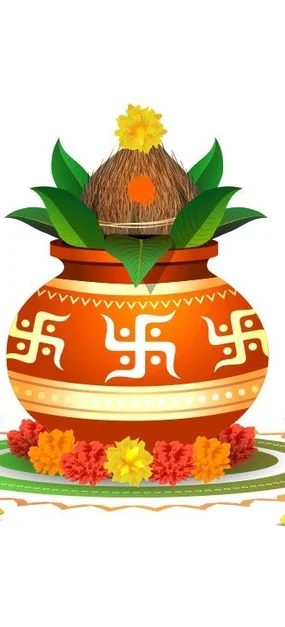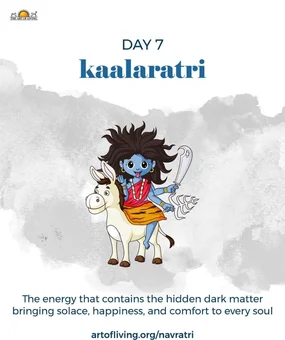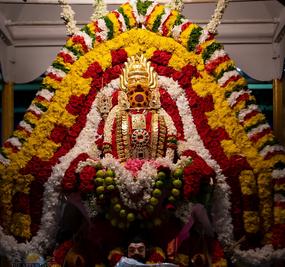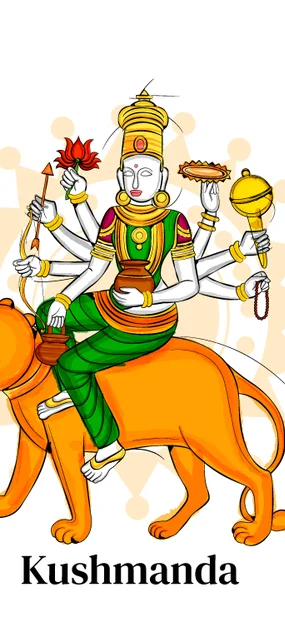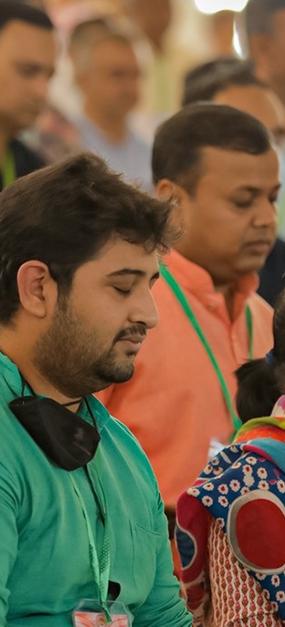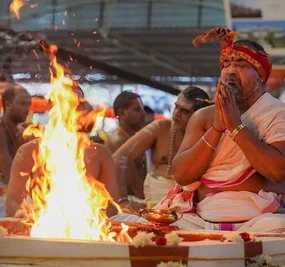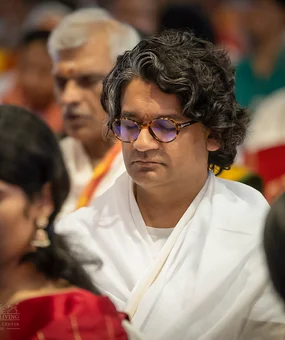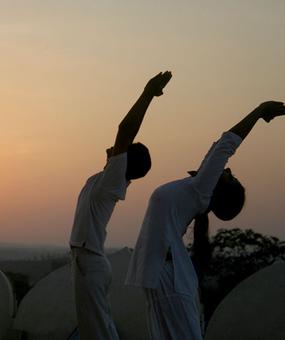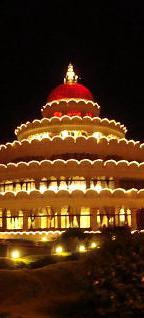“Devi Chandraghanta signifies the moon which is connected to the mind. She represents that which charms and captivates the mind. She is the embodiment of beauty. Wherever anything appears beautiful to you, it is because of the Mother Divine’s energy there. If she is not there, nothing is beautiful,” says Gurudev Sri Sri Ravi Shankar.
The Essence of Chandraghanta
On the third day of Navratri, Mother Divine manifests as Chandraghanta, also called Chandika, Rannchandi, or Vrikahvahini. Her forehead bears a crescent moon resembling a temple bell. Chandraghanta embodies beauty itself. True beauty is not merely physical but a manifestation of divine nature. Without this energy, beauty cannot truly exist; this vibrant force that animates life—whether in children, animals, or humans—brings forth genuine charm.
Divine Form and Attributes
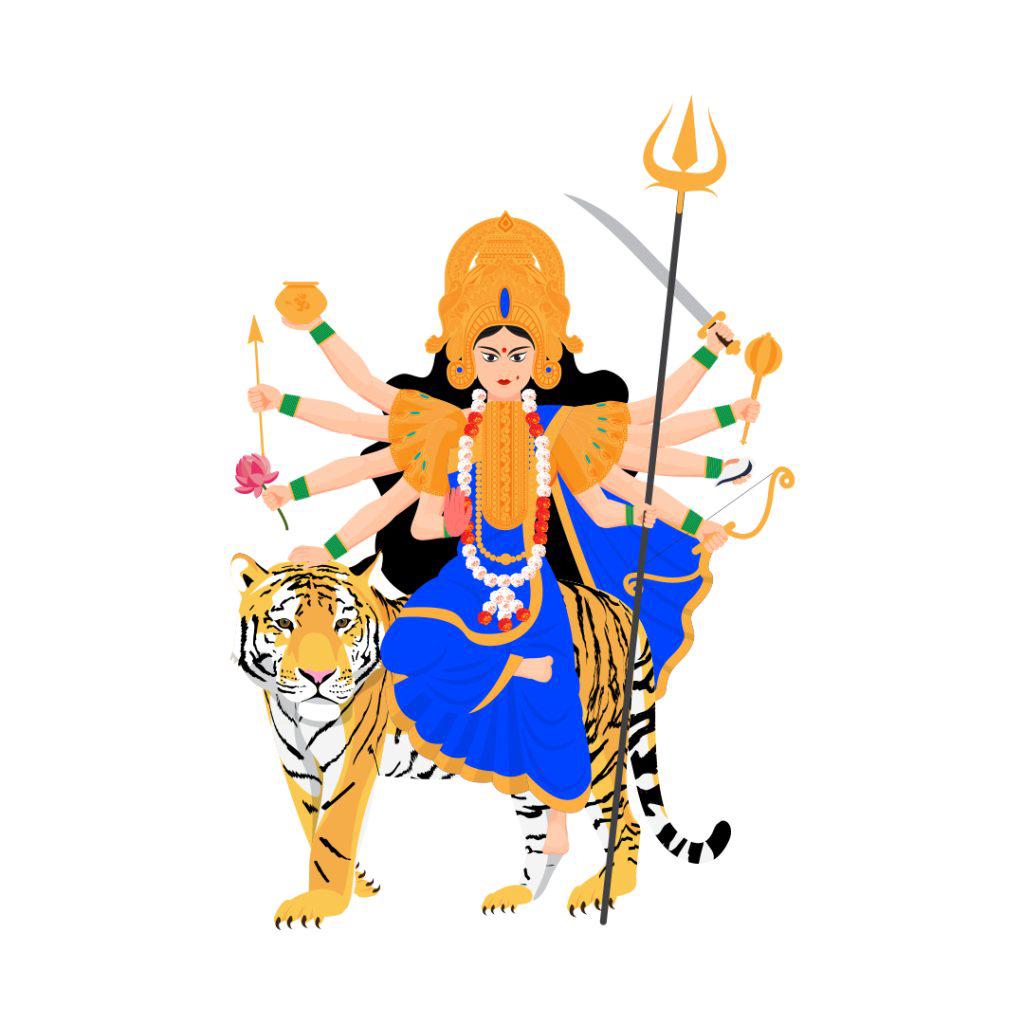
Goddess Chandraghanta is depicted with a radiant golden complexion and ten hands. In various depictions, she holds weapons such as a trident, mace, spear, bow, arrow, discus, and sword. In others, she carries a lotus, sacred pot, and bell, while one hand is positioned in a blessing mudra. A crescent moon, shaped like a bell, adorns her forehead, and her third eye, located in the center of her brow, remains perpetually open. She is often shown riding a lion or tiger.
Symbolism and Dual Nature
Chandraghanta Devi epitomizes beauty, charm, courage, and grace, embodying all that we find exquisite in life. Her divine energy captivates and attracts us. The third eye, always open, signifies the awakening of consciousness, offering protection from harm to those who seek her blessings. Simultaneously, her formidable form and array of weapons symbolize her readiness to confront and vanquish negative forces. She stands as a symbol of bravery and courage, akin to the lion or tiger she rides, embodying strength against injustice, misery, and suffering. Devi Chandraghanta thus exemplifies both benevolence and fierceness, adapting to the needs of the moment.
The Legend of Ma Chandraghanta and Shiva
Parvati Devi, daughter of the mountain king Himavan and Queen Menavati, undertook severe penance to win Lord Shiva as her husband. At that time, Shiva, mourning the loss of His first wife Sati, had retreated to the mountains. Despite His grief, Shiva was deeply moved by Parvati’s unwavering devotion and agreed to marry her. Parvati was the reincarnation of Sati.
Upon arriving at Parvati’s home, Shiva’s fearsome appearance—covered in ash, with matted hair, and adorned with a garland of skulls and snakes—along with His daunting wedding procession of ghosts, ghouls, and Aghoris, terrified Parvati’s family and friends. To protect her loved ones, Parvati transformed into the equally formidable Chandraghanta, persuading Lord Shiva to appear in a more pleasing form. Shiva obliged and manifested as a prince adorned with jewels.
With this reassuring form, Parvati comforted her family and friends, and they celebrated their union with a grand ceremony, commemorated annually as Shivaratri.
The Grace of Chandraghanta
Chandraghanta, revered as the goddess with a bell-like forehead, represents the embodiment of courage and valor in Devi Kavacham. As a fierce and radiant deity, Chandraghanta wields immense power to dispel fears and obstacles, guiding her devotees with an aura of protection and strength. Her presence is both calming and potent, and listening to the Devi Kavacham chants instills confidence and tranquillity in those who seek her grace.
The Moon’s Bell: Unity and Strength
Gurudev beautifully explains the meaning of the form of Devi Chandra Ghanta-
“Chandra also signifies the many feelings or shades of emotions and thoughts much like the different phases of the waxing and waning moon. Ghanta is a bell that produces just one kind of sound no matter how it is struck. In the same way, when the scattered mind immersed in the world of thoughts and feelings gets consolidated and established solely in the Divine, the divine energy within us finds a direction, and it begins to rise upwards.”
Gurudev beautifully explains further, “Do not run away from the mind, for the mind is also a manifestation of the Mother Divine. The Mother Divine is also present in us as sorrow, misery, hunger, and peace. So take everything together – whether pleasant or unpleasant – bringing all thoughts, emotions, and sounds together as one Naad (sound) like the sound of a bell or a large gong.”
The bell also symbolizes the call to battle, invoking fear in adversaries. This represents the power to overcome negative emotions. By praying to Devi Chandraghanta, devotees seek courage, happiness, and strength to conquer life’s challenges and adversities.
Meditating on the Third Form of Mother Divine
“Meditation is the bridge between the individual and the divine,” says Gurudev, “It connects you to the essence of your being and leads you on the path of spiritual awakening.” As we meditate on this form of Mother Divine on the third day of Navratri, we deepen our connection with Devi Chandraghanta as we imbibe within us her unique qualities and essence of beauty, strength, grace, oneness of mind, and valor.



